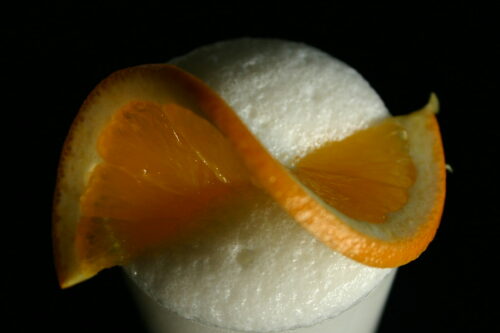Why New Orleans is Famous for Drinking
As early as 1819, Henry Bradshaw Fearon observed in Sketches of America, “To all men whose desire [is] to live a short life but a merry one, I have no hesitation in recommending New Orleans.” Through everything, from the stricter times of the Civil War, Reconstruction, and Prohibition, to the wild antebellum days and into the modern era. New Orleans has been a place where people go to find a good time on the way station of life. Béla Lugosi, escaping war and the fall of Béla Kun’s communist government, came first to New Orleans. While he did not stay here, Count Dracula often mentioned the strong impression the city left on him when he first came to America. And why not? Contrary to the movie, Béla Lugosi often drank wine.
Perhaps it goes back to the city’s origins. When the French made their way up the Mississippi River in 1699 they celebrated Mardi Gras with wine in the swamp, near Pointe à la Hache. The first European settlers who came here were men, often soldiers and adventurers, men on the make. Pierre Le Moyne d’Iberville founded the Louisiana colony both to claim it before the hated English could plant a flag and to make money. And while he died in 1706, his younger brother Jean-Baptiste Le Moyne de Bienville made a fortune, even putting New Orleans where he did because he owned the property and was running a successful trading post in the area. Who did France send him though? A lot of criminals. Thieves, vagrants, smugglers, and prostitutes. New Orleans beat Sydney, Australia as a dumping ground for the kind of people who often like to have a drink. Indeed, many a hapless vagrant sent to Louisiana was guilty of nothing more than getting too drunk at the tavern to make it home at night. Then came Pierre de Rigaud, marquis de Vaudreuil-Cavagnial. Governor of Louisiana from 1743 to 1753, he hosted lavish parties, by tradition creating a taste among New Orleans natives for the finer things in life.
After becoming American, New Orleans was a popular port of entry because the city was booming, among the richest in the world. And if one did not want to stay one could always get on a steamboat and from there go to Memphis, Louisville, Cincinnati, and even Pittsburgh. Yet, stay, many did, in particular the Irish before the Civil War and Italians after the war, and all despite high crime and yellow fever outbreaks that claimed immigrants by the bushel. And likely many stayed when they saw the city’s delights. The bars were plentiful and with double the death rate of any other American city, wine, women, and song were preferred for the short but merry life. If one made it to two years, a party would be thrown as the chance of dying from yellow fever diminished. Parties were constant, prostitution the norm, and New Orleans boasted more gambling houses than any other city. Is it any wonder the various versions of “House of the Rising Sun” feature the vices of sex, gambling, drink, or all three depending on the singer?
Storyville became famed for vice and for being key to the creation of Jazz, with early greats such as Joseph LaMothe “Jelly Roll” Morton, Joe “King” Oliver, Sidney Bechet, and Louis Armstrong playing in the bars and brothels. Storyville was shut down in 1917. The party moved to Rampart Street, then known as the Tango Belt. Each era of police raids simply made the district move. Not even Prohibition could not stop the party, even as agents flooded the city. How could it? Mayor Martin Behrman lamented Prohibition in public speeches and drank before those speeches. Andrew J. McShane beat Behrman in 1920 on a reform platform, but his reforms did not extend to alcohol. By 1925 the French Quarter alone had nearly 90 speakeasies, some operating in plain sight.
The constant influx of people, immigrants or native-born, in a culture where French was until 1850 the common tongue and traditions held fast, led to a truly cosmopolitan place. In this great mass of people New Orleans saw many cocktails crafted. Most famous was the Sazerac, originally based around cognac and later on rye whiskey. The bitters made it a good after dinner drink, a needed feature given the city’s love of butter, salt, and spices. If one would rather vermouth, cognac, and rye whiskey with your bitters there was always the Vieux Carré. After the Civil War came the complex Ramos Gin Fizz or New Orleans Fizz, created in 1888 by Henry Charles Ramos, a bartender at the Imperial Cabinet Saloon. Joe Impastato of Napoleon House may not have liked drunks but drinks sold so he put his spin on the Pimm’s Cup after World War II, which is a lighter concoction.
The city even adopted drinks from other places and claimed them for ourselves such as Death in the Afternoon, French 75, Scarlett O’Hara, and Absinthe served with sugar cube and water to make it more palatable. With rum so close by the Daiquiri was popular and the Hurricane was crafted by Pat O’Brien in his famous bar because he needed to move rum. Milwaukee is known for beer and California for wine but New Orleans is where the cocktail is king. And among the city’s many nicknames, one is “The Land of Civilized Drinking.”
Want a more detailed history of New Orleans cocktails? Consider taking a cocktail tour with Nola Tour Guy! All our tours are “pay what you feel like” So you, the guest decides the price. Have a sashay and drink your way across 300 years of New Orleans History. This tour is packed with history, but with a casual flair and a conversational feel. Find out more about our New Orleans Cocktail tour here.












